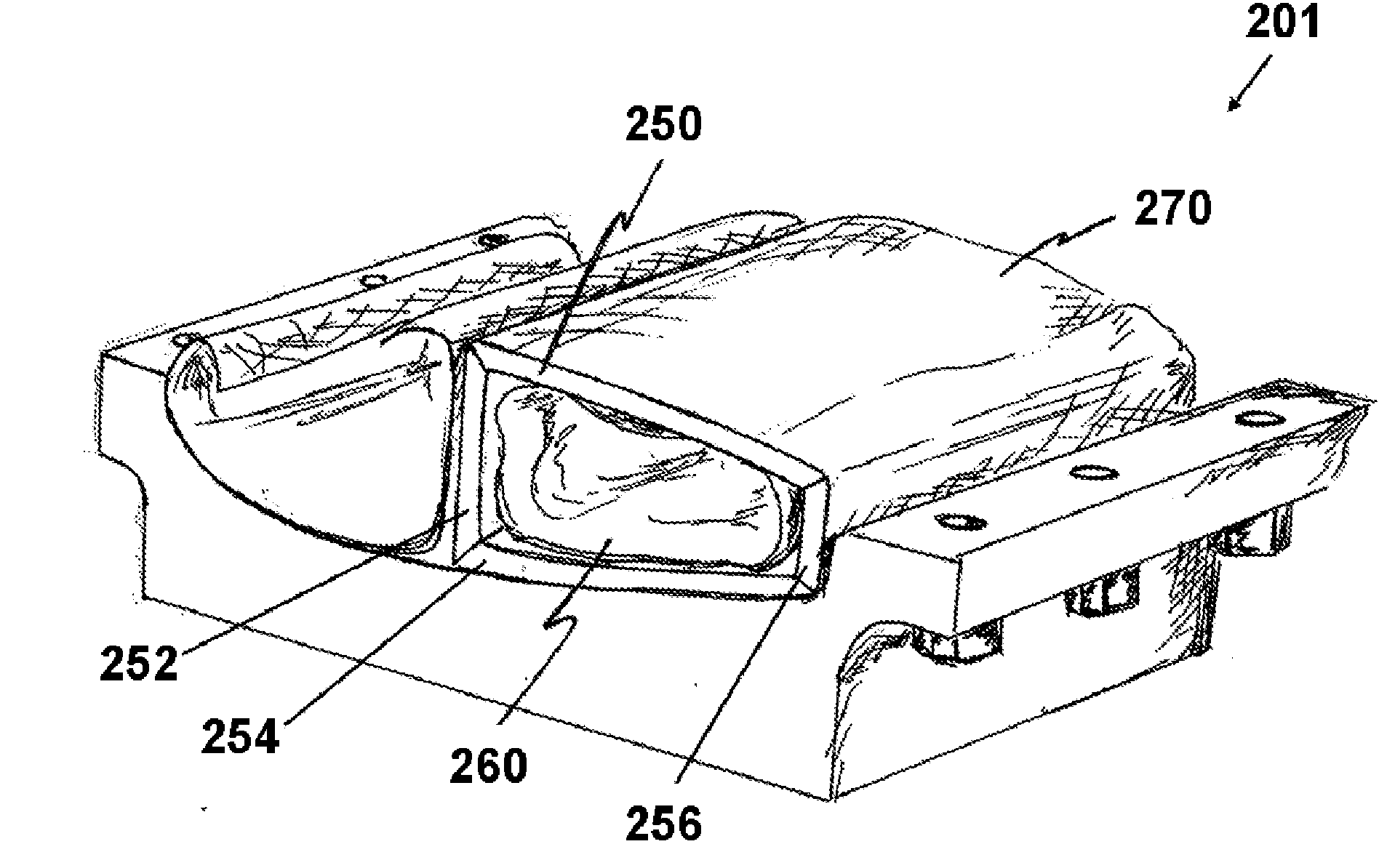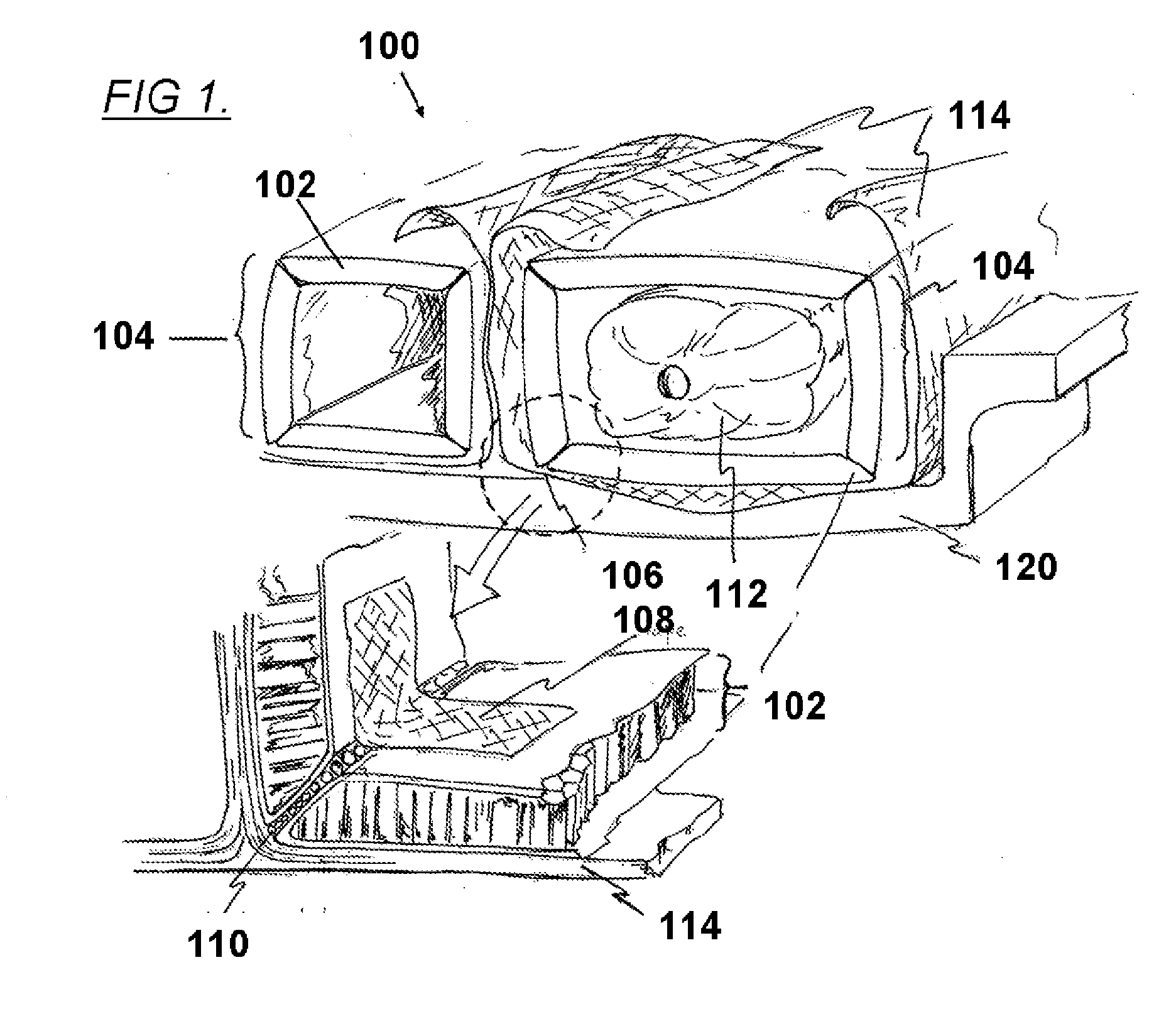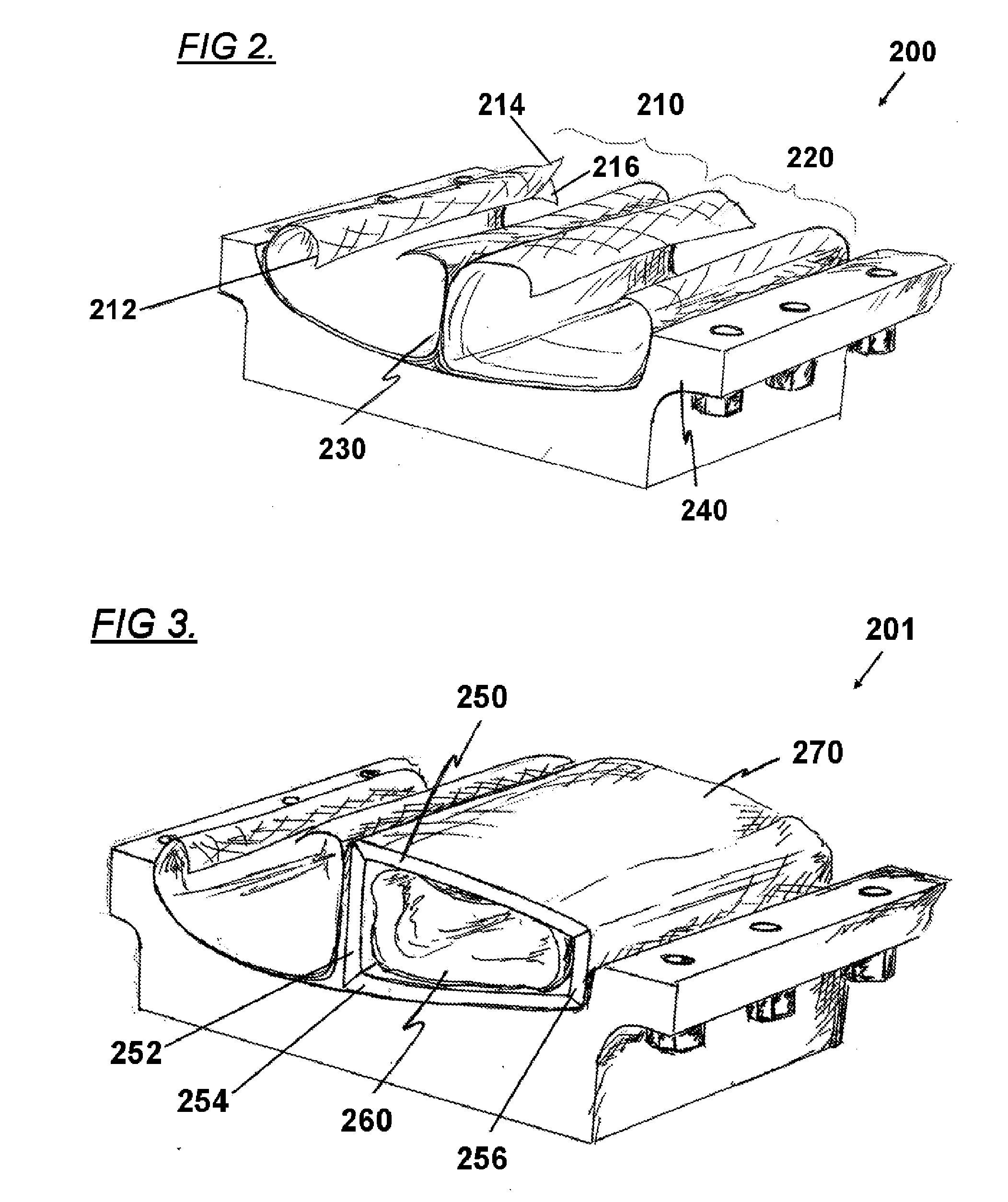Self-Tooling Composite Structure
a composite structure and self-tooling technology, applied in the field of manufacturing composite structures, can solve the problems of complex manufacturing tools, unstable structure, and high labor content and other costs, and achieve the effect of avoiding buckling instability, reducing labor intensity and other costs, and reducing labor intensity
- Summary
- Abstract
- Description
- Claims
- Application Information
AI Technical Summary
Benefits of technology
Problems solved by technology
Method used
Image
Examples
Embodiment Construction
[0019]The present invention provides apparatus, systems, and methods in which a partially cured composite layer is used as scaffolding for a second layer that is not self-supporting, and the layers are simulcured.
[0020]As used herein, “composite” means engineered materials made from two or more constituent materials. Of special relevance are carbon composites, in which carbon fiber is embedded in a matrix or resin. Alternate composites are also contemplated including those containing fiberglass, ceramics, and other elements. A layer of composite material could include a plurality of fibers positioned at an orientation with respect to the long axis of an object. A matrix or resin material could surround said fibers. In certain applications, the plurality of fibers can advantageously be arranged with an orientation at least 45° from a line normal to the long axis of the object.
[0021]As used herein, a “laminated object” refers to an object made with laminates. These laminates typically...
PUM
| Property | Measurement | Unit |
|---|---|---|
| Temperature | aaaaa | aaaaa |
| Thickness | aaaaa | aaaaa |
| Thickness | aaaaa | aaaaa |
Abstract
Description
Claims
Application Information
 Login to View More
Login to View More - R&D
- Intellectual Property
- Life Sciences
- Materials
- Tech Scout
- Unparalleled Data Quality
- Higher Quality Content
- 60% Fewer Hallucinations
Browse by: Latest US Patents, China's latest patents, Technical Efficacy Thesaurus, Application Domain, Technology Topic, Popular Technical Reports.
© 2025 PatSnap. All rights reserved.Legal|Privacy policy|Modern Slavery Act Transparency Statement|Sitemap|About US| Contact US: help@patsnap.com



